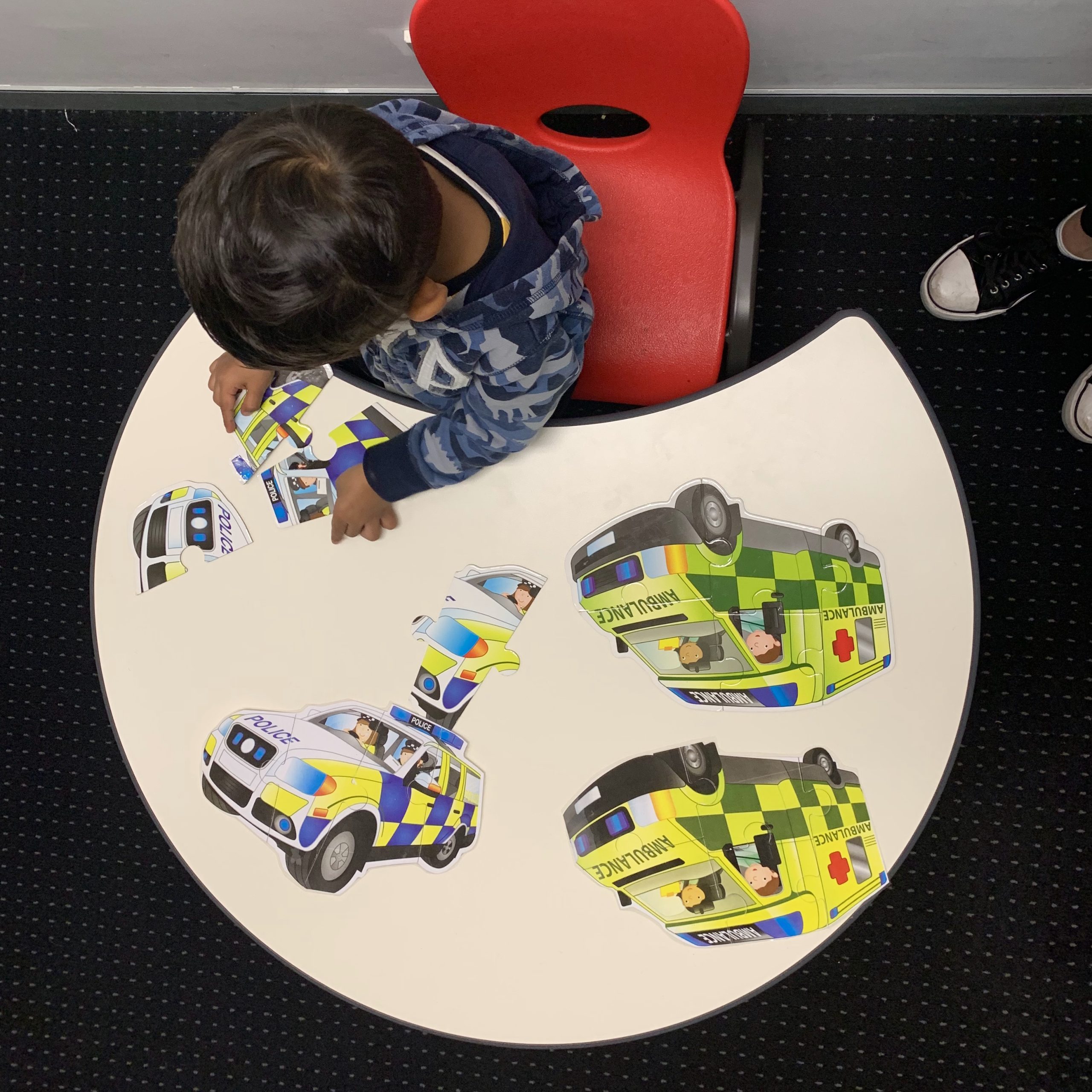
Why is the ESDM different?
In the Early Start Denver Model (ESDM), children learn through active engagement in an activity. It is so much more than achieving the cognitive goal of matching the puzzle piece to the correct part of the puzzle. It is more than developing the fine motor skill of getting the puzzle into place. In the ESDM, every activity focuses around play. We target multiple goals and objectives across all areas of the child’s development in every activity. In an activity such as a puzzle, the Certified ESDM Therapist will also be targeting goals in the following areas at the same time. This could include:
- Receptive language
- Expressive language
- Imitation
- Joint Attention
- Social skills
How does the Early Start Denver Model achieve all of these goals in the one activity?
They use the primary Early Start Denver Model (ESDM) teaching strategies which are:
Managing the child’s attention
The child chooses something they like. The therapist keeps the child’s attention shifting between them and the object. This makes the therapist an intrinsic part of the child’s play.
ABC teaching format
This shares the desired behaviour or response from the child. We use natural reinforcers to make sure the child keeps using that behaviour or response.
Instructional techniques
We use a least to most prompting including fading, shaping, and chaining. This is how the child to learns new objectives and maintain objectives that have already been learned.
Modulating attention and arousal
Modulating the emotional state and activity levels (known as affect and arousal) keep the child in an optimal state of learning. They continually apply the appropriate strategy based on whether the child is passive, overactive, or a bit of both.
Managing unwanted behaviours
We use the ESDM four-step approach. Unwanted behaviour is not reinforced, and the child learns to calm themselves. Unwanted behaviours reduce very quickly when a child starts ESDM.
A dyadic, or two-way, interaction
The child and the therapist share smiles, emotion and eye contact. The child and therapist take turns to lead and follow each other. They also develop play ideas together so that both the child and the therapist have a turn or a role in the play.
Optimising the child’s motivation
The ESDM uses choices that interest the child, being actively interested in the child’s play, looking at the child, waiting to allow the child to initiate and following through on the child’s interest.
Positive affect
This includes smiles, voice, facial expressions and noises, add the fun factor to their play. This also brings the child continually into the social loop during each activity.
Sensitivity and Responsivity
The therapist is sensitive and response to everything the child does. It is the most important part of the ESDM. The therapist interprets and responds to these cues to enhance the child’s learning and communication. It includes the child’s movements, noises, gestures and.
A variety of communication functions
Each therapist engineers the opportunity to teach a variety of communication functions across every activity so that the child can learn ask for help, request, name, protest, answer, and choose to finish an activity.
Level of language
The therapist chooses the level of language that it is appropriate for the child’s level of language. We call this the ‘one up rule’. If the child is non-verbal then the therapist uses single words. If the child is using single words, then the therapist uses two words etc. This allows the child to understand language and develop communication as they move through their goals.
Every activity is a joint activity
The therapist builds each activity with the child so that it is a joint activity. The therapist elaborates on each activity and works to include new ideas from the child. This keeps the child motivated and optimises the child’s learning opportunities.
Smooth transitions
The therapist ensures that the transition between activities is seamless, and the child has motivating options for the next activity. We maintain a high rate of learning to make sure we use every minute in the session. The child moves on, and the motivation to play and engage is maintained.
How do I learn more about the ESDM?
We’re here to support you
At OneOnOne Children’s Therapy, we believe that every child deserves the opportunity to grow and thrive.
Our clinics are not just a space for therapy – it’s a place where children can discover their strengths, overcome challenges, and reach their full potential.
By combining innovative therapy techniques with a stimulating and supportive environment, we’re proud to offer a holistic approach to paediatric therapy and early intervention that addresses the unique needs of each child we support.
Reach out for support
If you’re concerned about your child’s development or want to learn more about how the ESDM can help your child, OneOnOne Children’s Therapy is here to help.
Call our Bondi Junction and Mascot clinics on (02) 80657837 or email. You can book a free 30 minute phone call with us to discuss how we can support your child’s unique journey
